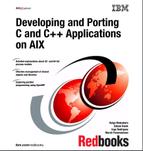10.3. Simple code layout method
The simplest method of using template code is to include both the declaration and definition of the template in every compilation unit that uses instances of the template. From a code layout point of view, this is very easy, since the template declaration and definition can be kept in a single header file. Using the stack example, the code in Example 10-1 on page 379 and Example 10-2 on page 380 would be combined into a single header file, for example, stack.h, which is then included by every compilation unit that wishes to use the template. Alternatively, the header file for a template declaration can include the source file that contains the template definition. Using the stack template example, the header file, stack.h, would #include the source file, stack.C.
There are a number of disadvantages to using this method. Some of them can be overcome; others can not.
10.3.1. Disadvantages of the simple method
The first disadvantage is that using the header files can become complicated, particularly when other header files need to declare an instance of the template. In order to do this, they must #include the stack.h file, which potentially leads to multiple #include’s of the file, resulting in multiple definitions of the member functions. This problem can be fixed with the addition of preprocessor macros in the header file to protect against multiple #include operations. For example:
#if !defined(stack_h) #define stack_h .... ....declaration and definition of stack template .... #endif
Using the macros shown above, the contents of the header file will only appear once in the compilation unit, regardless of the number of times the file is included. This resolves the problems of multiple definitions within a compilation unit.
Template code bloat
The second disadvantage is that the code for each template instance will potentially appear multiple times in the final executable, resulting in the problems of large executable size and multiple symbol definition warnings from the linker.
As an example, consider an executable made up of two compilation units, main.C and functions.C. If both compilation units include the stack.h header file, and declare variables of the type stack<int>, then after the first stage of compilation, both object files, main.o and functions.o, will contain the code for the member functions of the stack<int> class. When the system linker parses the object files to create the final executable, it cannot remove the duplicate symbols since, by default, each compilation unit is treated as an atomic object by the linker. This results in duplicate symbol linker warnings and a final executable that contains redundant code.
The size of the final executable can be reduced by using the compiler option, -qfuncsect, when compiling all of the source code modules. This option causes the compiler to slightly change the format of the output object files. Instead of creating an object file, which contains a single code section (CSECT) and must be treated by the system linker as an atomic unit, the compiler creates an object file where each function is contained in its own CSECT. This means that the object files created are slightly larger than their default counterparts since they contain extra format information in addition to the executable code. This option does not remove the linker warnings, since at link time, there are still multiple symbol definitions. The benefit of this option is that the linker can discard multiple, identical function definitions by discarding the redundant CSECTs, resulting in a smaller final executable. When the -qfuncsect option is not used, the compiler cannot discard the redundant function definitions if there are other symbols in the same CSECT that are required in the final executable.
Refer to 6.1.9, “Virtual functions” on page 226 for information on another potential cause of C++ code bloat.
Template compile time
The use of the -qfuncsect option reduces the code size of the final executable. It does not resolve the other disadvantage of using this method, that is, longer than required compile times. The reason for this is that each compilation unit contains the member functions for the templates that it instantiates. Using an extreme example with the stack class, consider the situation where an application is built from 50 source files, and each source file instantiates a stack<int> template. This means the member functions for the class are generated and compiled 50 times, yet the result of 49 of those compiles are discarded by the linker since they are not needed. In the example used here, the code for the stack class is trivial, so in absolute terms, the time saved would be minimal. In real life situations, where the template code is complex, the time savings that can be made when compiling a large application are considerable.
Because of the fact that not all of the disadvantages of the simple template method can be overcome, it is only recommended for use when experimenting with templates. An alternative method can be used, which solves all of the problems of the simple method and scales very well for large applications.
